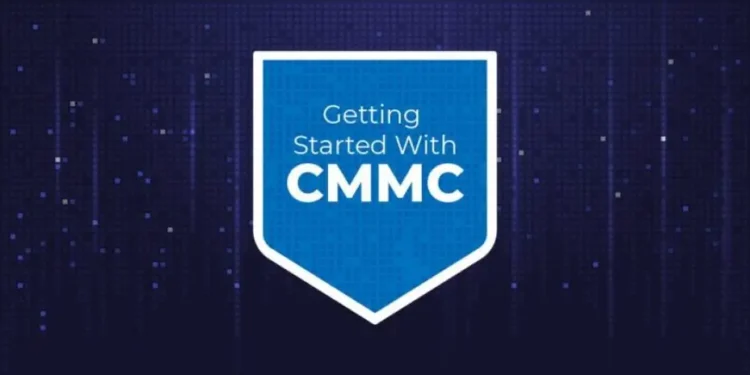For defense contractors, cybersecurity is serious business—but it doesn’t have to be intimidating. One effective tool contractors use to manage their cybersecurity journey is the Plan of Action and Milestones, or POAM. Rather than just another technical document, a POAM is like a trusty map guiding organizations toward meeting their CMMC compliance requirements.
POAM as Your Roadmap to Achieving Continuous Compliance
Think of a POAM as a clear, step-by-step guide. It lays out exactly what security gaps exist and what must be done to fill those gaps, especially useful when tackling the shift from CMMC level 1 requirements up to the more detailed CMMC level 2 requirements. Instead of wandering aimlessly through compliance paperwork, companies follow structured milestones to keep their cybersecurity practices sharp and effective.
Keeping compliance continuous is where the POAM shines. Contractors use their POAM to regularly revisit and revise their security practices, ensuring nothing slips through the cracks. This method helps avoid the frustrating cycle of hurried fixes right before audits. By providing clear timelines, a POAM keeps contractors organized and ready for ongoing assessments.
Mitigating Audit Vulnerabilities Through Structured POAM Tracking
A POAM isn’t just about organization—it actively reduces vulnerabilities during audits. Structured POAM tracking clearly documents any security gaps and shows how contractors plan to address them. This transparency allows Certified Third-Party Assessor Organizations (C3PAOs) to quickly see what actions are already underway, creating a smoother audit experience.
Detailed POAM tracking can even boost confidence during audits. Auditors value honesty and transparency, and having a POAM demonstrates that contractors aren’t hiding their shortcomings. Instead, they’re proactive and realistic, which often results in less scrutiny and fewer surprises during official evaluations.
Strategic Remediation Management Enabled by a Robust POAM
A robust POAM helps contractors handle cybersecurity remediation more strategically. Rather than randomly patching gaps as they appear, contractors use their POAM to prioritize fixes based on urgency and risk level. This approach ensures the most critical issues are tackled first, significantly improving the organization’s overall security posture.
Additionally, strategic remediation guided by a POAM saves resources. Contractors know exactly where to focus their efforts and budgets, avoiding wasted time and money on low-impact fixes. The result is a streamlined and efficient approach to meeting complex CMMC compliance requirements without overwhelming staff or budgets.
Accelerating CMMC Readiness with Targeted POAM Implementation
A well-crafted POAM helps contractors accelerate their path toward CMMC readiness. Instead of getting stuck figuring out how to meet complex compliance demands, organizations use their POAM as a targeted plan, breaking big tasks into smaller, manageable milestones. This allows even smaller contractors to confidently progress from simpler CMMC level 1 requirements to the more challenging level 2 standards.
Furthermore, a targeted POAM implementation encourages teams to stay proactive rather than reactive. Clear deadlines create a sense of urgency, motivating staff to tackle compliance objectives efficiently. This results in faster readiness, less downtime, and smoother interactions with assessors during formal evaluations.
Enhancing Accountability via Transparent POAM Documentation
Transparency breeds accountability, and a POAM exemplifies this perfectly. Every milestone, every action, and every responsible party is clearly listed, making sure everyone in the organization understands their cybersecurity role. When staff see their responsibilities documented, they become more committed to maintaining compliance standards.
Additionally, transparent POAM documentation helps management quickly identify who is meeting their obligations and who might need additional support. This openness prevents finger-pointing and confusion, building a culture of trust and accountability. Contractors with clear POAMs often report higher team engagement and fewer compliance setbacks.
Streamlined Security Improvements Guided by POAM Milestones
Another advantage of using a POAM is how effectively it streamlines security improvements. Instead of scattered initiatives, the POAM provides clear, concise milestones to track security progress. This reduces confusion, ensures clarity among team members, and keeps security initiatives from becoming overly complicated or burdensome.
With streamlined milestones, security teams avoid getting overwhelmed. Each goal feels achievable and straightforward. Contractors find it simpler to integrate these tasks into daily operations, turning cybersecurity improvements into routine practices rather than exceptional events.
You can also Read: The Critical Role of Ergonomic Casters in Manufacturing Environments
POAM as a Catalyst for Proactive Cybersecurity Posture
Finally, a POAM can significantly transform how contractors approach cybersecurity overall. Rather than reacting to breaches or compliance issues after the fact, organizations with effective POAMs become proactive. They continuously monitor, update, and strengthen their security measures, always staying ahead of potential threats or regulatory shifts.
This proactive posture becomes a critical advantage, especially in today’s fast-moving threat environment. Companies using their POAM as a catalyst to anticipate and address cybersecurity risks tend to experience fewer security incidents and lower compliance-related costs. By regularly revisiting and updating their POAM, contractors ensure their cybersecurity approach remains dynamic, effective, and aligned with evolving CMMC compliance requirements.

















